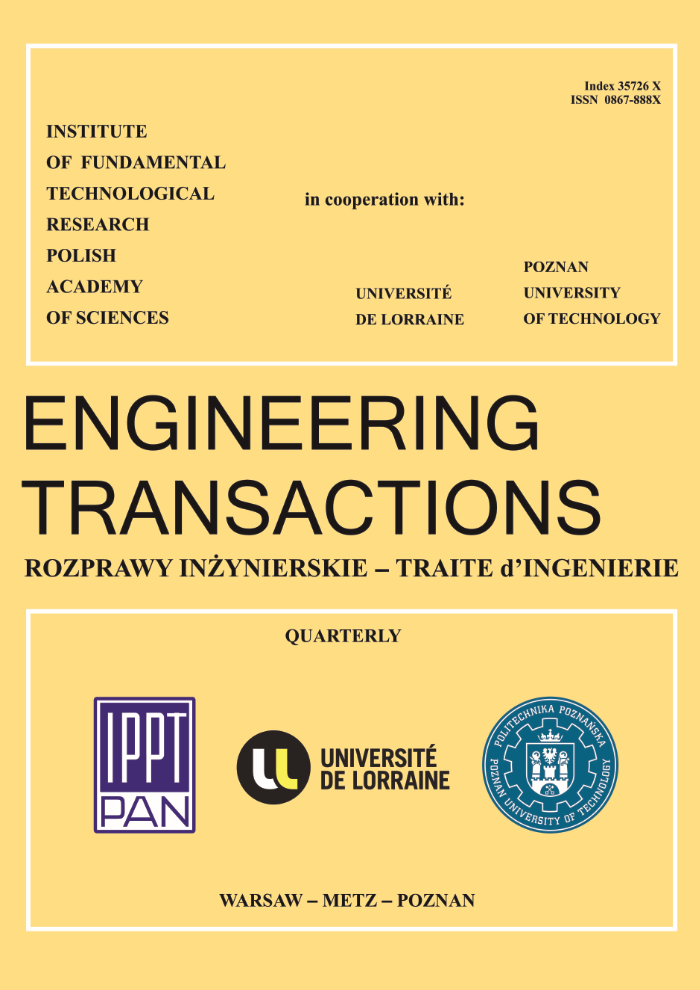Abstract
Homogenization-based approach to structural optimization and Free Material Design (FMD) technique are discussed in case of isotropy. The problem is elaborated from the perspective provided by: (i) the theory of composites and (ii) Isotropic Material Design (IMD) – a variant of FMD. Results provided by IMD are interpreted in light of the Hashin-Shtrikman bounds on the effective isotropic properties of material-void mixtures. This in turn provides practical guidelines for 3D printing.Keywords:
Hashin-Shtrikman bounds, Free Material Design, 3D printingReferences
[1] Allaire G., Shape Optimization by the Homogenization Method, Springer-Verlag, New York, 2002.
[2] Bourdin B., Kohn R.V., Optimization of structural topology in the high-porosity regime, Journal of the Mechanics and Physics of Solids, 56(3): 1043–1064, 2008. https://doi.org/10.1016/j.jmps.2007.06.002.
[3] Czarnecki S., Isotropic material design, Computational Methods in Science and Technology, 21(2): 49–64. https://doi.org/10.12921/cmst.2015.21.02.001.
[4] Czarnecki S., Lewiński T., The free material design in linear elasticity, In: Rozvany G.I.N., Lewiński T. (Eds.), Topology Optimization in Structural and Continuum Mechanics, International Centre for Mechanical Sciences, Courses and Lectures Vol. 549, Springer, Wien, CISM Udine, 2014, pp. 213–257.
[5] Dzierżanowski G., Lewiński T., Compliance minimization of two-material elastic structures, In: Rozvany G.I.N., Lewiński T. (Eds.), Topology Optimization in Structural and Continuum Mechanics, International Centre for Mechanical Sciences, Courses and Lectures Vol. 549, Springer Wien, CISM Udine, 2014, pp. 175–212.
[6] Nečas J., Hlavaček I., Mathematical Theory of Elastic and Elasto-Plastic Bodies: An Introduction, Elsevier, Amsterdam, 1981.
[2] Bourdin B., Kohn R.V., Optimization of structural topology in the high-porosity regime, Journal of the Mechanics and Physics of Solids, 56(3): 1043–1064, 2008. https://doi.org/10.1016/j.jmps.2007.06.002.
[3] Czarnecki S., Isotropic material design, Computational Methods in Science and Technology, 21(2): 49–64. https://doi.org/10.12921/cmst.2015.21.02.001.
[4] Czarnecki S., Lewiński T., The free material design in linear elasticity, In: Rozvany G.I.N., Lewiński T. (Eds.), Topology Optimization in Structural and Continuum Mechanics, International Centre for Mechanical Sciences, Courses and Lectures Vol. 549, Springer, Wien, CISM Udine, 2014, pp. 213–257.
[5] Dzierżanowski G., Lewiński T., Compliance minimization of two-material elastic structures, In: Rozvany G.I.N., Lewiński T. (Eds.), Topology Optimization in Structural and Continuum Mechanics, International Centre for Mechanical Sciences, Courses and Lectures Vol. 549, Springer Wien, CISM Udine, 2014, pp. 175–212.
[6] Nečas J., Hlavaček I., Mathematical Theory of Elastic and Elasto-Plastic Bodies: An Introduction, Elsevier, Amsterdam, 1981.


